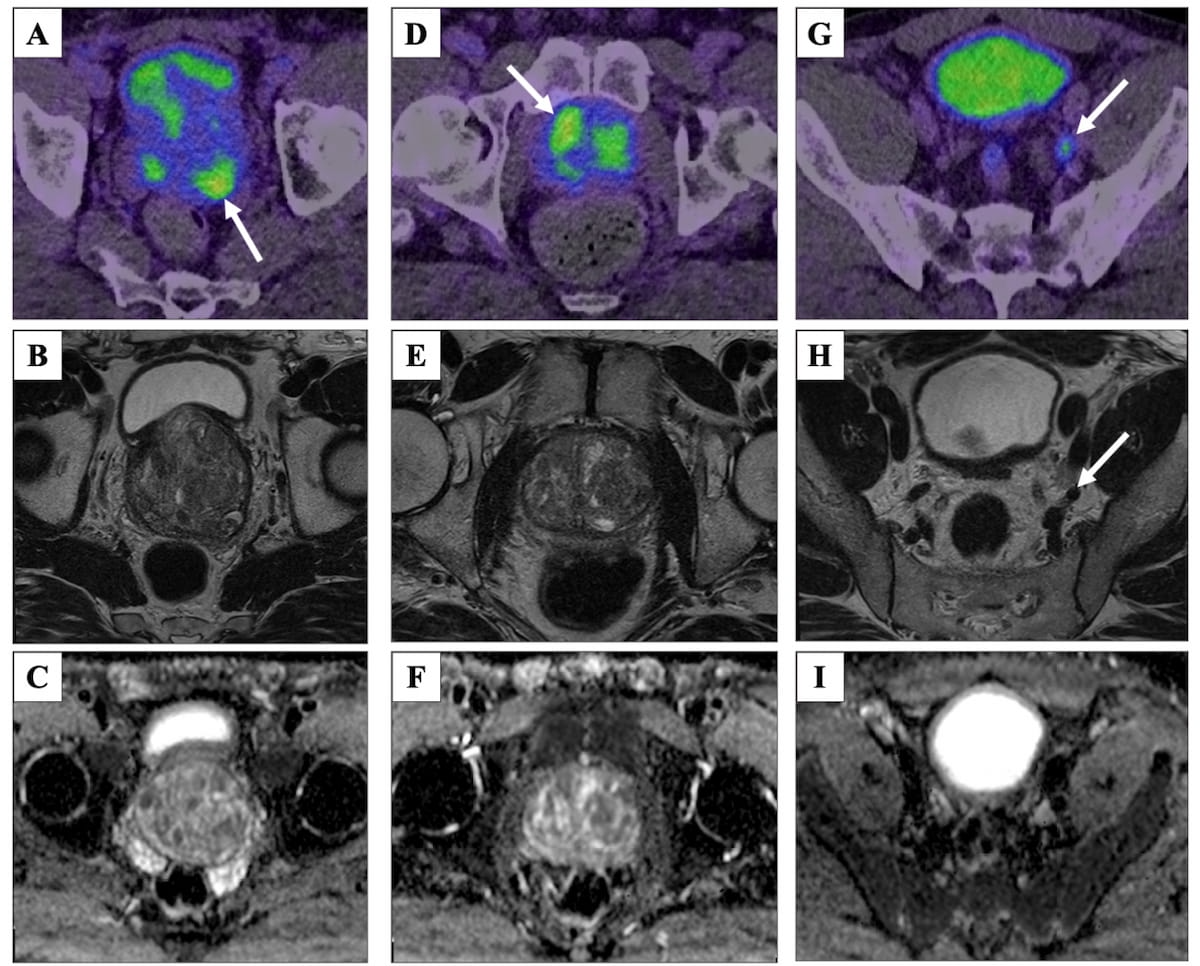Study Examines Prognostic Value of 68Ga-PSMA-11 PET/CT for Patients at High Risk of PCa
Initial detection of metastatic prostate cancer via 68Ga-PSMA-11 PET/CT was significantly associated with PSA values > 20 ng/ml, ISUP grade > 3 and MRI T-stage > 3, according to research presented recently at the SNMMI conference.
In a study of over 500 treatment-naïve men with at least one of three major risk factors for prostate cancer, 43 percent of those with all three risk factors (PSA values > 20 ng/ml, ISUP grade > 3 and MRI T-stage > 3) had evidence of metastatic prostate cancer (PCa) on 68Ga-PSMA-11 PET/CT imaging.
For the retrospective study, presented at the 2024 Society of Nuclear Medicine and Molecular Imaging (SNMMI) Annual Meeting, researchers examined correlations between clinical factors, imaging parameters and metastatic PCa in 525 men who had 68Ga-PSMA-11 PET/CT imaging,
In a univariable analysis, the researchers found that 11.8 percent of those having at least one of the aforementioned risk factors for PCa had metastatic PCa on 68Ga-PSMA-11 PET/CT imaging. The percentage of patients with metastatic PCa more than doubled (25.6 percent) with two risk factors and climbed to 43.5 percent with all three risk factors, according to the study authors. The researchers noted the correlations between elevated PSA level and MRI T-stage >3 with metastatic PCa on PET/CT imaging were also evident in the multivariable analysis.
While MRI imaging showed no focal suspicious areas (B and E) nor focal areas of diffusion restriction (C and F) in a 63-year-old man with a PSA level of 32 ng/ml, PET/CT revealed nodal metastases (A and D) as well as a suspicious left iliac node (G). (Images courtesy of SNMMI.)

“Within this large tertiary cohort, the PSA at diagnosis and MRI T-stage > 3 were significant independent predictors of the presence of metastases in subjects presenting with a new diagnosis of prostate cancer,” noted study co-authors Amy Sharkey, M.D., a clinical research fellow at the Biomedical Research Center at King’s College London, and Gary J.R. Cook, MBBS, MSc, M.D., who is affiliated with the Department of Cancer Imaging at the School of Engineering and Imaging Sciences at King’s College London in the United Kingdom.
While the SUVmax for primary lesions on 68Ga-PSMA-11 PET/CT imaging was associated with the three aforementioned risk factors as well as a cribriform pattern and perineural invasion, the study authors found no statistical difference between patients with biochemical recurrence (BCR) and those without BCR, regardless of treatment with radical prostatectomy (RP) or curative intent radiotherapy (RT).
“(The SUVmax) was not predictive of BCR in subjects undergoing RP or RT treatment during a median follow-up of 509.5 days,” added Drs. Sharkey and Cook.
Reference
1. Sharkey A, Cook GJR. 68Ga-PSMA-11 PET/CT for baseline staging of high-risk prostate cancer: associations between clinical risk factors, metastases and imaging parameters. Presented at the 2024 Society of Nuclear Medicine and Molecular Imaging Annual Meeting, June 8-11, Toronto, Canada. Available at: https://www.xcdsystem.com/snmmi/program/10OD8Tq/index.cfm . Accessed June 20, 2024.
Emerging AI Algorithm Shows Promise for Abbreviated Breast MRI in Multicenter Study
April 25th 2025An artificial intelligence algorithm for dynamic contrast-enhanced breast MRI offered a 93.9 percent AUC for breast cancer detection, and a 92.3 percent sensitivity in BI-RADS 3 cases, according to new research presented at the Society for Breast Imaging (SBI) conference.
Can Abbreviated Breast MRI Have an Impact in Assessing Post-Neoadjuvant Chemotherapy Response?
April 24th 2025New research presented at the Society for Breast Imaging (SBI) conference suggests that abbreviated MRI is comparable to full MRI in assessing pathologic complete response to neoadjuvant chemotherapy for breast cancer.
What New Research Reveals About Novice Use of AI-Guided Cardiac Ultrasound
April 4th 2025In a study recently presented at the American College of Cardiology (ACC) conference, researchers found that novice use of AI-guided cardiac ultrasound after an AI-enabled electrocardiogram increased the positive predictive value for reduced left ventricular ejection fraction (LVEF) or aortic valve stenosis by 33 percent.
GE HealthCare Debuts AI-Powered Cardiac CT Device at ACC Conference
April 1st 2025Featuring enhanced low-dose image quality with motion-free images, the Revolution Vibe CT system reportedly facilitates improved diagnostic clarity for patients with conditions ranging from in-stent restenosis to atrial fibrillation.